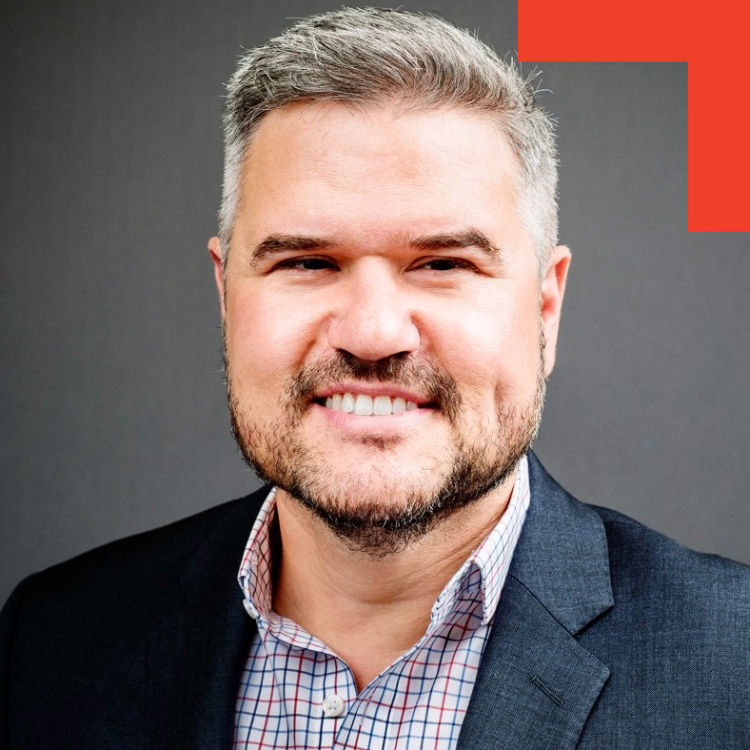Breaking Down Silos: Enterprise Growth Strategies for Commercial Teams
Enterprise companies can overcome growth plateaus by breaking down silos, aligning marketing and sales, improving communication, and prioritizing people-first transformation over quick tech fixes.

Strategies for Commercial Teams
In today’s competitive business landscape, enterprise companies often hit growth plateaus that can be difficult to overcome. While startups face their own unique challenges, established organizations contend with different obstacles when trying to scale further. These challenges frequently stem from commercial team structure issues that prevent cohesive growth.
In a recent episode of “FR8 Marketing Gurus,” host Jennie Malafarina spoke with fractional CRO Chelsea Reynolds about strategies for revamping commercial teams at established companies. With eight years of experience in freight technologies leading revenue teams, Chelsea shared valuable insights on identifying problems, implementing solutions, and measuring success.
Identifying Structural Issues in Commercial Teams
According to Chelsea, one of the most common issues preventing growth in established companies is weak internal communication. This fundamental problem creates several downstream effects:
- Departmental silos: Teams operating independently without proper coordination leads to inefficiencies
- Duplicated work: Without proper communication, employees often repeat tasks unknowingly
- Value perception issues: Team members feel undervalued when their work isn’t properly communicated or recognized
“Internal communications are usually quite weak, and that causes a lot of double work, silos, people feeling like they don’t have value,” Chelsea explained.
While this communication gap often starts at the leadership level (as the saying goes, “the fish rots at the head”), it’s not solely the CEO’s responsibility. Even leaders who excel at communication may struggle to prioritize it among numerous other responsibilities. The solution? Create structured communication channels like regular town halls where wins are celebrated, projects are reviewed, and company progress is transparent.
The Marketing-Sales Disconnect
Perhaps the clearest symptom of communication breakdown appears between marketing and sales departments. This manifests in several familiar ways:
- The lead attribution battle: Marketing generates leads that sales claims as their own, changing lead sources in the CRM
- The quality versus quantity debate: Marketing claims sales isn’t following up on leads, while sales complains about lead quality
- Compensation misalignment: Different incentive structures create competing rather than collaborative behaviors
Chelsea emphasized that this disconnect ultimately harms the company’s bottom line. When marketing can’t attribute leads properly, their budget may be cut, reducing the overall lead flow. The solution starts with aligning compensation structures and ensuring transparent attribution of leads across the customer journey.
“Marketing is going after them and moving them through the funnel, and sales is going after them and moving them through the funnel,” Jennie noted. “You kind of do have two, right? But there’s also marketing touch points along the way… they both play together.”
Technology Adoption and Resistance
Technology plays a critical role in breaking down silos, but adoption often faces resistance. Chelsea observed distinct patterns in how different team members approach new technology:
- Marketing professionals typically embrace technology because it provides visibility into what’s working
- High-performing salespeople value technology that helps them work more efficiently and improve customer experience
- Underperforming salespeople often resist technology, seeing it as unnecessary overhead
This resistance creates significant problems, particularly when salespeople fail to document customer interactions in the CRM. While these individuals might have valuable industry connections, their knowledge becomes siloed and can’t be preserved as institutional knowledge.
“I’ve sometimes [seen] ‘oh, they’re such a good salesperson. They have all these relationships and they’re talking to all these people,’ but there’s nothing in the CRM, nothing,” Jennie shared from her experience.
Compensation Structures That Drive Alignment
Creating effective compensation plans is essential for driving the right behaviors. Chelsea recommends:
- Avoid incentivizing inbound versus outbound leads as this encourages “juking the stats” rather than focusing on company results
- Separate hunter and farmer roles with different compensation structures for each
- Hunters (new business development) should have lower base salaries but higher commission potential
- Farmers (account managers) should have higher base salaries with different incentive structures
- Implement escalating commission structures that reward exceeding targets without arbitrary ceilings
A thorny question remains about how to incentivize marketing teams effectively. Traditional metrics like MQLs (Marketing Qualified Leads) can be easily manipulated by changing lead scoring thresholds. While revenue attribution for marketing-sourced leads seems logical, marketing ultimately hands off to sales, making direct revenue responsibility challenging.
Preserving Institutional Knowledge During Transformation
As companies grow, new roles emerge and processes evolve. Yet preserving institutional knowledge remains critical. Chelsea recommends:
- Get internal buy-in by listening to existing employees about what works and what doesn’t
- Leverage current employee knowledge rather than dismissing their experience
- Invest in developing internal talent rather than automatically bringing in outsiders
“Do you have somebody in your team who’s hungry, good at their job, and wants to step up and try something new? Get them some coaching,” Chelsea advised. “It’s not incredibly expensive to invest in your people, and they have that knowledge of what’s worked well, what did we try 10 years ago that we should probably dust off and try again.”
This approach not only preserves valuable institutional knowledge but also improves employee retention by creating growth opportunities.
Navigating Generational Differences
A significant challenge in today’s workplace involves managing teams with multiple generations working together. The conversation highlighted changing workplace expectations, particularly from younger employees who may approach work differently than previous generations.
While Chelsea cautions against generalizing entire generations, she notes that leadership approaches have evolved over the past decade:
“I think in the last five to 10 years, we became more empathetic as leaders and we listen to people more. And I think that the trend now is the hammer’s coming down, and this bully mentality is somehow back… I don’t think it’s going to stick.”
Chelsea predicts that attempts to force change without collaboration will result in talent loss. Today’s workforce expects their opinions to be valued and their feedback incorporated into company decisions.
Measuring Transformation Success
How do you know when your commercial team transformation is successful? Chelsea identifies four key metrics:
- Revenue targets: Are you hitting your financial goals?
- Employee happiness: Measured through internal NPS or similar surveys
- Employee retention: Are your quality people staying?
- Customer satisfaction: Are customers happy and continuing to do business with you?
For established companies undergoing significant changes, Chelsea suggests even modest improvements in these metrics (such as an NPS of 7) should be considered a win initially.
Transformation Strategies to Avoid
When asked about transformation strategies that sound promising but rarely work in practice, Chelsea pointed to the common impulse to implement new technology systems:
“Let’s get a new tool!” she quipped.
This approach often fails because it addresses symptoms rather than root causes. Before investing in new technology, companies need to understand current processes and get buy-in from the people who will use the tools.
“It’s like blaming your golf clubs for your bad hits,” Chelsea explained. “Before you just rip out what you’ve got and get a new tool, you’ve got to know where you’re going, where you’ve been, how things work.”
Where to Start: People, Process, or Technology?
The conversation concluded with the fundamental question: where should transformation begin? Chelsea emphasized starting with people:
“In terms of getting buy-in… I’m talking about getting buy-in from the people that are there right then trying to jam in another system. Or, ‘hey, we’re doing this process this way.'”
By engaging your team members first, you tap into their knowledge of what’s working and what isn’t. This approach helps identify whether problems stem from processes or technology gaps, allowing for more targeted solutions.
As Jennie summarized: “Hire the smart people and trust them to do their job… Get out of the weeds and do what you need to do in your leadership role, which is flow in the communication.”
Final Thoughts
Transforming commercial teams in established enterprises requires a delicate balance of preserving what works while evolving for the future. By focusing on improved communication, breaking down departmental silos, aligning compensation structures, and starting with people before processes or technology, companies can overcome growth plateaus and achieve sustainable success.
Most importantly, leaders must recognize that lasting transformation comes from collaboration rather than dictation. By engaging team members in the process and valuing their input, organizations create buy-in that drives long-term results.
This blog post was adapted from an episode of “FR8 Marketing Gurus” featuring Chelsea Reynolds, a fractional CRO with extensive experience in revenue team leadership.
Discover Your Marketing Maturity Level
Click the button below to take the assessment.


